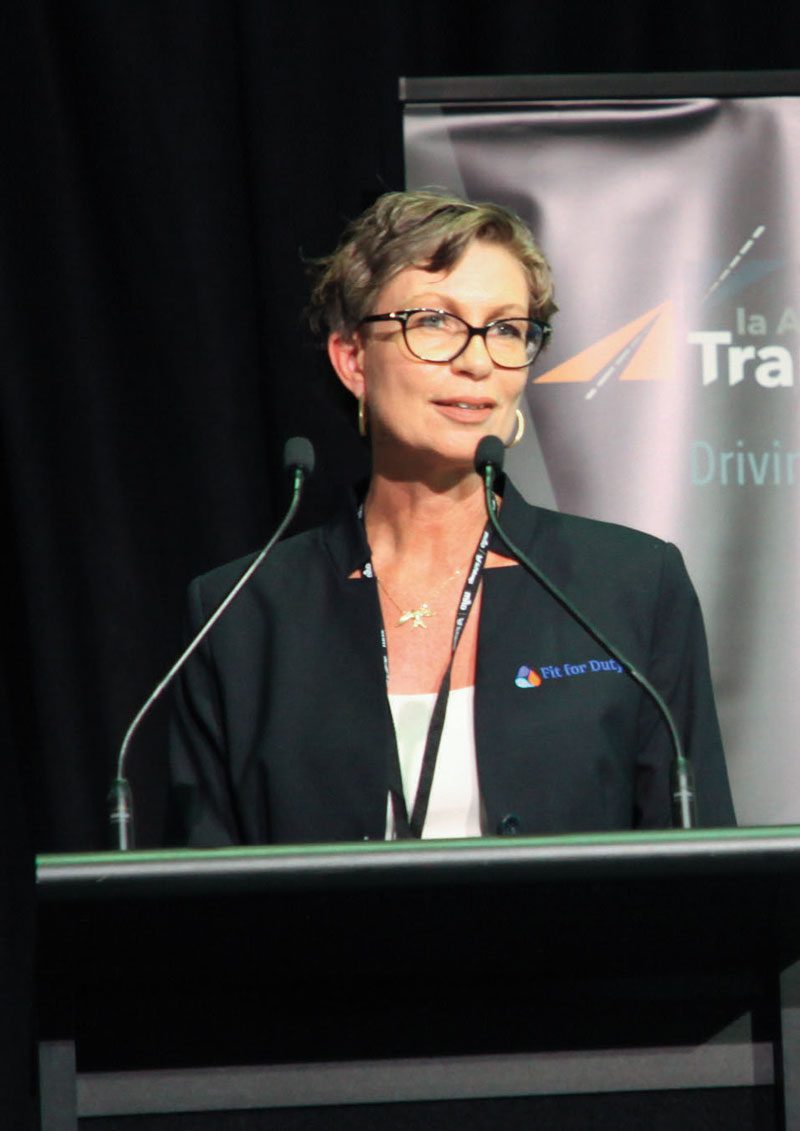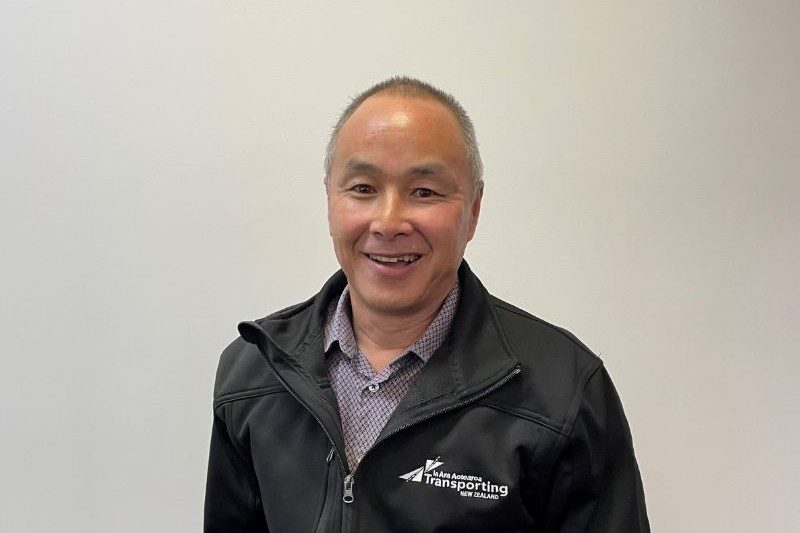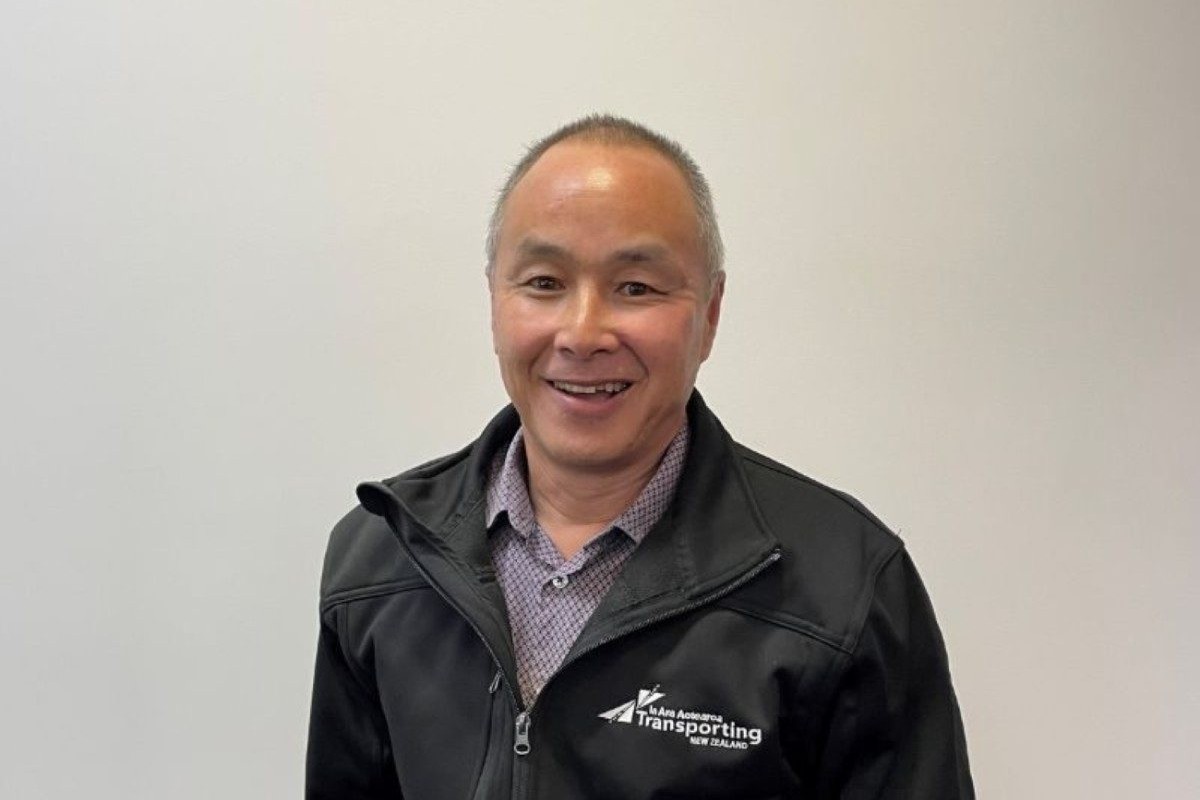September: A Changing World Conference 2023
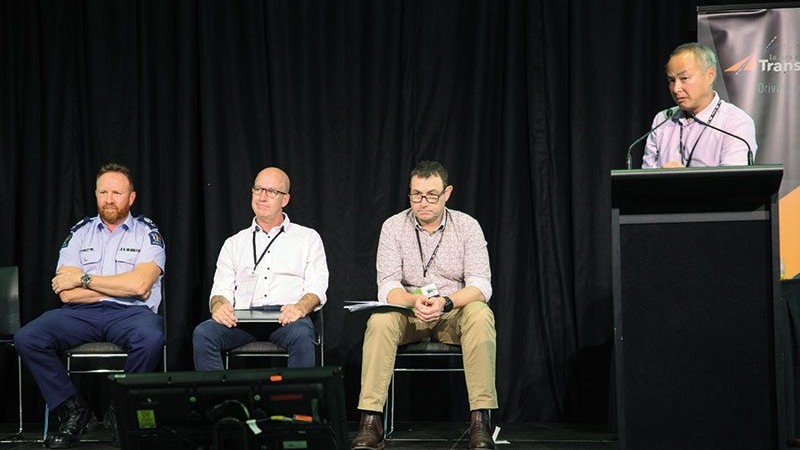
New ways of monitoring and measuring compliance, permitting and fatigue were in the spotlight at this year’s Transporting New Zealand conference. Last month, we looked at politics and economics. In this issue, we delve into regulation and discuss Waka Kotahi’s permitting system, livestock drivers’ fatigue management, and the panel session with WorkSafe, Waka Kotahi and New Zealand Police.
Nature and number of compliance infringements
Panel discussion facilitated by Dom Kalasih
DYLAN HUNT, senior manager of safe commercial transport, regulatory services, Waka Kotahi
Hunt says regulatory strategy articulates the new way of working as a real-world regulator.
“It means we work with people so they understand the rules and how to be safe, taking action where we need to and basing our decisions on best data, insights and evidence. It’s about reducing risk and preventing harm,” he says.
“As the lead regulator for land transport in New Zealand, our purpose is to ensure the land transport system is safe, effective and functions well for everyone.”
Hunt says New Zealand’s transport landscape involves many trades over multiple industries and sectors.
“Of the 108,000 current transport service- licence holders, approximately 38,500 are considered active. This is broken down into goods and service licences, large passenger service, small passenger service, rental service and vehicle recovery licences.
“We also know that 30% of those active TSL holders are in the Auckland region, with Canterbury and Waikato both coming very close behind.”
Waka Kotahi implemented the new Safe Commercial Transport Operating Model in July 2022.
“It is designed in a way to help us shift from being purely reactive to a model where we can target risk proactively,” Hunt says.
“The model shifts the focus from reacting to compliance issues after they’ve already happened, going from the ambulance at the bottom of the cliff to a place where we’re at the top of the cliff, understanding and preventing harm before it happens,” he says.
The operating model is made up of four prongs: proactive, reactive, portfolio and monitoring.
“We gain a better picture of the industry, and we will be able to provide that information back to the sector. Once we’ve completed it for a year, we’ll have a good data set to be able to refer to,” Hunt says.
“For us to be different, we’re going to have to think differently and approach things differently and be more collaborative with the industry.”
PAUL WEST, health and safety inspector, WorkSafe
Vehicles are one of the most significant causes of injuries to people at work in New Zealand, with 60% of fatalities in the workplace.
West says the entire industry must focus on the basics. “We are having a massive focus on just getting the basics right in the inspectorate. So, when you see us, you’ll be seeing people who will be looking to see if you have maintenance systems in place to look after your vehicles, your fleet, fatigue management, alcohol and drugs,” he says.
“Fatigue management, as you all know, goes so far beyond the work-time rule. Are you taking steps to ensure people aren’t doing secondary jobs? What are you doing to make sure that the drivers in the vehicles are fit for duty when they’re out there?
“One of the large areas that we still deal with are people who are impaired on the road.”
West says there are two primary arms to WorkSafe. “The majority of the inspectorate is what we call the general inspectorate. They do the proactive work. They’re out there; they’ll come and visit. They will usually make an appointment, and they’ll look through, order and assess,” he says.
“Worst-case scenario, you get myself or one of my team coming to visit, and at the moment, that is usually because somebody has died.”
West says if you look beyond speed and inattention, you’ll find factors like maintenance fatigue and traffic management causing the issue. “Real basic things that we can control, and we can influence,” he says.
“If you can take that back to your colleagues, to your workplaces and push some of these real basic controls and look at not just having those controls in place but making sure that they’re effective and that’s from the top down, that will make a difference.”
Senior sergeant MIKE FLAT, area manager Auckland and Northland CVST, New Zealand Police
From January 2022 to 30 April 2023, 2398 HPMV crashes were entered into the Crash Analysis System. Most of those crashes were minor or no injury. A total of 315 were death and serious injury crashes.
“Loss of control appears to be the most common factor at 47%,” says Flat, who works with the New Zealand Police Commercial Vehicle Safety Team. “Fatigue and distraction, we believe, are the two main causes,” he says.
“Our role in enforcement on the road is to ensure that people get home safely. Roading conditions contribute massively to that.
“Increasing use of speed cameras, technical inspections, the enforcement of powers and service and risk regulations, are all things we can do in this area.
“Obviously, police checks and enforcement still need to be done, but it starts with you guys. We can’t do it alone. And as I said, it’s all about people’s lives and people coming home.”
Flat says the CVST team has had drivers report their bosses over safety concerns.
“It’s got to the point where some drivers are so frustrated that there are operators out there putting their people and others’ lives in danger.
“The truckies themselves are ringing up and asking me to send my team out to pull them over, which we will oblige,” he says.
“People blame truckies for a lot of stuff. We encourage you to send through any video you may have showing others on the road to us. We take this very seriously, and we will follow these up and hold people accountable because it’s not just affecting car drivers, it’s affecting truck drivers as well.”
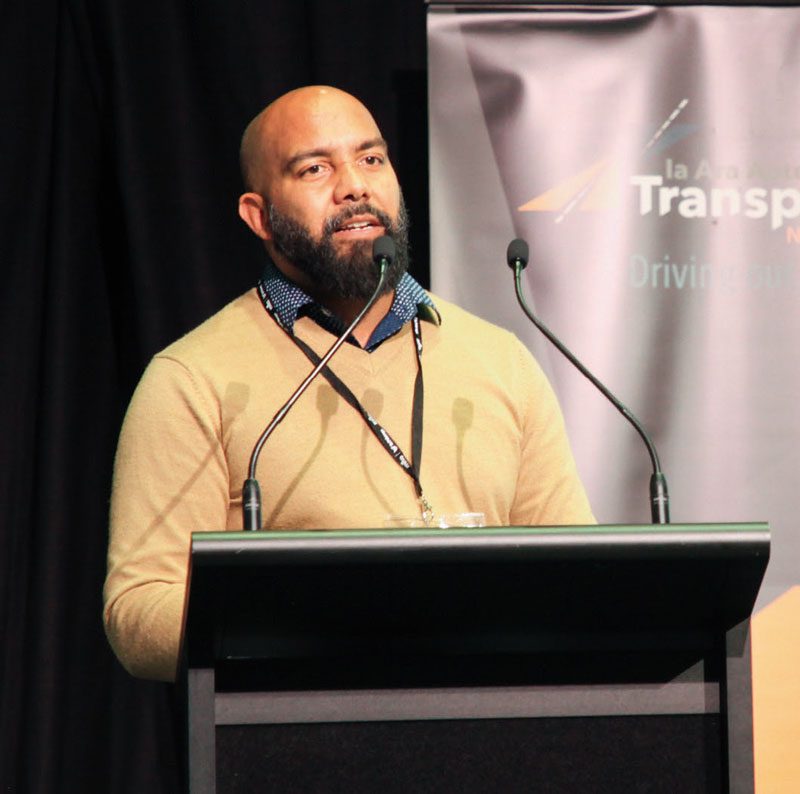
Waka Kotahi permitting system
Riccardo Areosa, programme manager, Waka Kotahi, gave an update on the transport agency’s heavy-vehicle permitting system.
“When we look at the volumes and growth of the permitting product over the past couple of years, it highlights that although we had Covid, transport didn’t stop; it just showed the importance of freight and transporters,” Areosa says.
He says there’s been exponential growth in the past couple of years of high-productivity motor vehicles (HPMV), including 50MAX.
“We saw a dip in new vehicles and combinations coming into the industry with the borders being closed. But those numbers have come back as components have come back into circulation,” Areosa says.
“It is a struggle trying to balance the demand and the compliance activities as well, but we try to keep operators honest.
“Our custodial duty is to ensure that the system is safe, the vehicles are compliant, and our infrastructure is protected. It’s the key for pivoting our infrastructure protection and overall general operator compliance.”
In the Q&A portion of Areosa’s discussion, he was asked if councils understand how much more damage is done by a seven-axle unit than a nine-axle.
“We do share that info, and we produce guidance for councils. Whether they apply that guidance is another matter, but I do know they face the same skills constraints as we do.
“It’s just sharing that information and trying to upskill those decision-makers within the councils to say what the impacts are, the opportunities, and what’s currently on their roads,” he says.
“There are 67 different types of permits, but there’s probably something more we could do to help councils and support them to make better decisions.”
Livestock drivers’ fatigue management pilot programme
Rachel Lane, from Fit for Duty, spoke to delegates about driver fatigue management within the livestock sector.
“Livestock Fatigue Management is a pilot programme that we have been running with some livestock operators. We believe it’s an innovative way to monitor and measure the effects of what’s called an alternative fatigue management scheme,” she says.
“AFMS schemes have been around for a long time, but we’ve got an opportunity to maybe move it forward.”
Lane says research identified that there’d been a high number of breaches of work-time rules and driving over standard hours – largely as a result of the unpredictable and dynamic nature of the sector.
“How do we better manage this? Is there something we can do differently instead of just handing out these fines and continuing the same way? Largely, these breaches were because of unforeseen circumstances.”
The pilot programme asked drivers if they thought the current work-time rule actually helped manage fatigue.
“Would it be any surprise to you to know that they believe that it doesn’t?”
Part of the pilot – AFMS 1 – allowed drivers to vary their rest breaks, to be able to take a rest break when they’re feeling tired.
“I don’t believe that just simply sticking to that work-time rule is enough to manage and mitigate the risk of fatigue,” Lane says.
“One of the biggest things we’ve noticed is the success of the AFMS 1 in allowing drivers to choose to have a rest rate when they feel tired.”
AFMS 2 allows drivers to put in a request to extend their working day up to an additional two hours to give them provision for when unforeseen circumstances arise.
“Unfortunately, because of the way electronic logbooks are structured, anytime you deviate from the rule, you are in breach. We needed to make sure that we had a system and a solution that meant we were still capturing all that information so we can audit it. We can report on it and do all those good things.
“Our approach consisted of three integrated platforms that were designed to collect real-time fatigue data to enable the drivers and the dispatchers and the supervisors to make informed decisions as to whether a particular driver could vary their rest time breaks or have those extended hours.”
Lane says the pilot has given insight that they’ve never had before. “Typically, when you are talking about fatigue, it’s either retrospectively or you are looking at camera footage and saying, ‘Oh, yes, that was probably fatigue’.
“Or if you ask a driver, ‘Hey, how are you feeling?’, they’re largely gonna say, ‘Yeah, I’m feeling pretty good,’ right? We are not very good judges of our own fatigue,” she says.
Lane says a survey in the initial stages of the pilot asked drivers why they might be breaching the work-time rule. “What was really important to them, and certainly one of the things that compelled me to be part of this programme, was animal welfare,” Lane says.
“Making sure that we are doing something better for those animals was really, really important to us. And you can see by the response here that it was very, very important to the drivers as well. I’m sure it’s quite distressing for drivers when they’re seeing animals in distress and yet they’ve got to just keep pushing on because they’ve got these work-time restrictions.”


